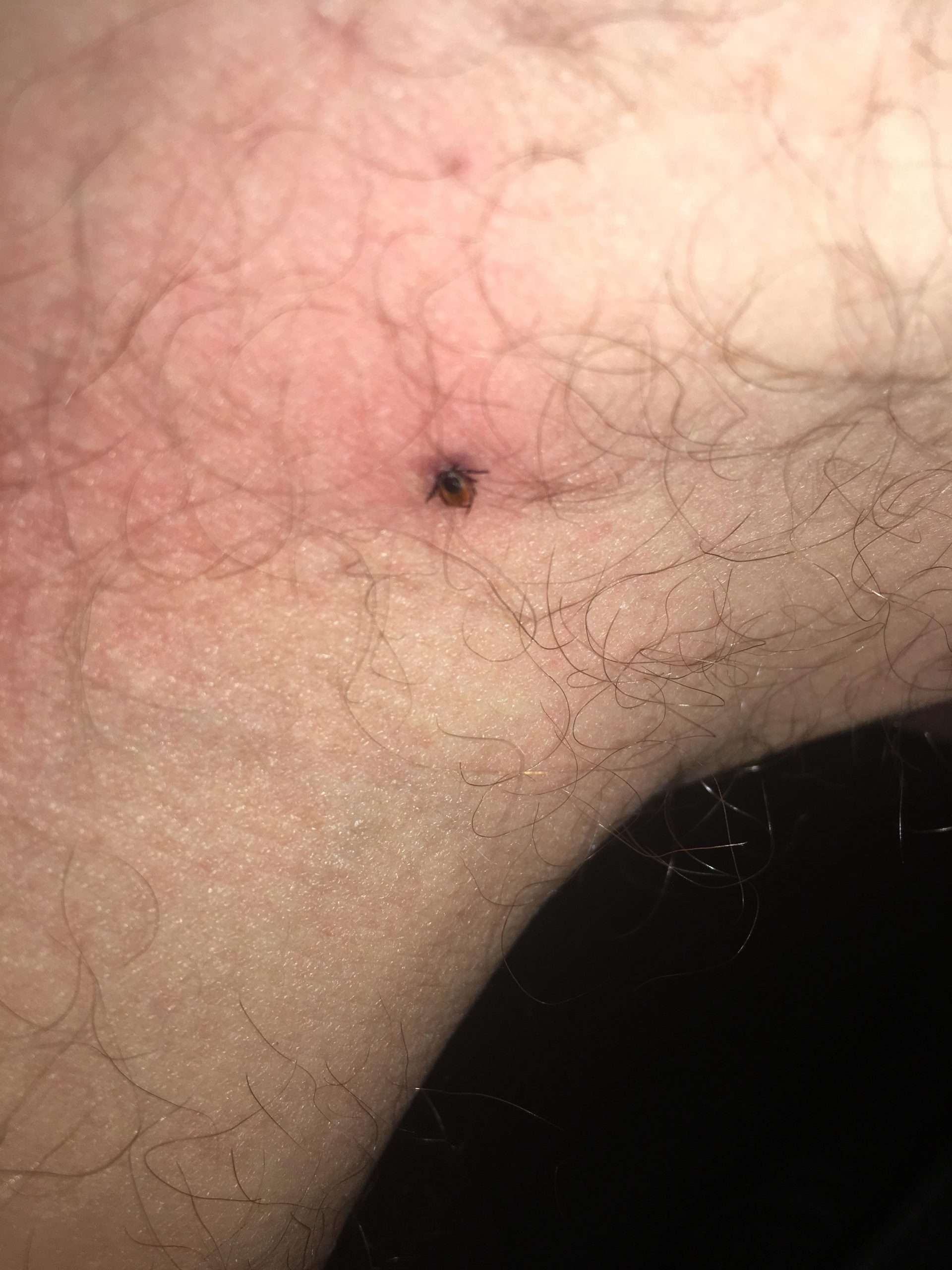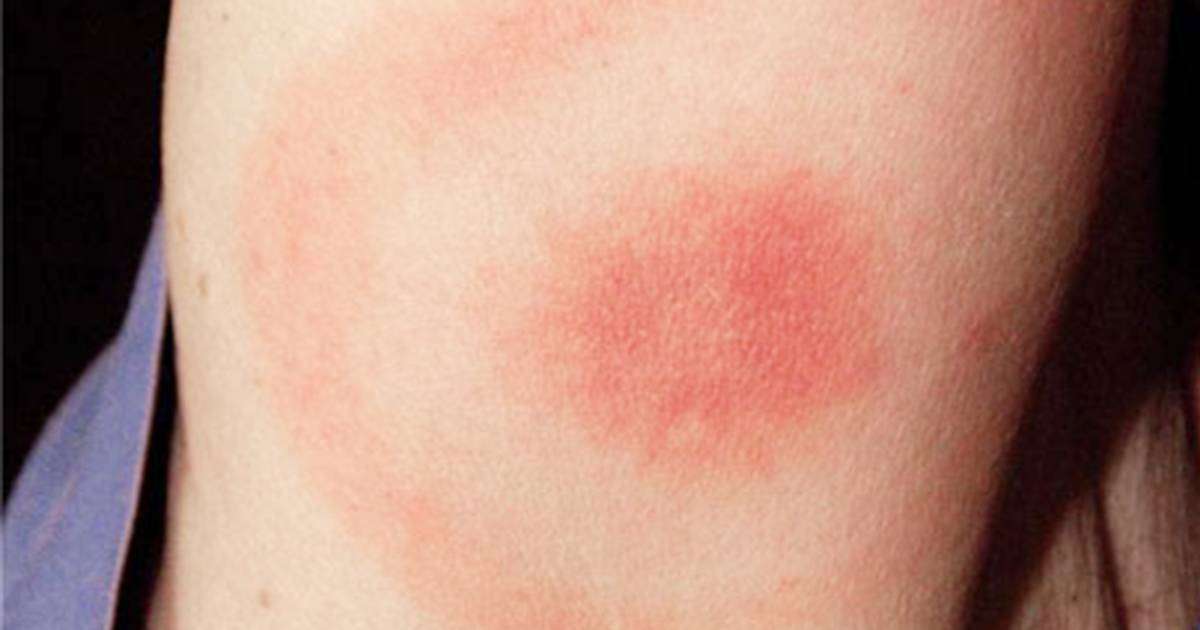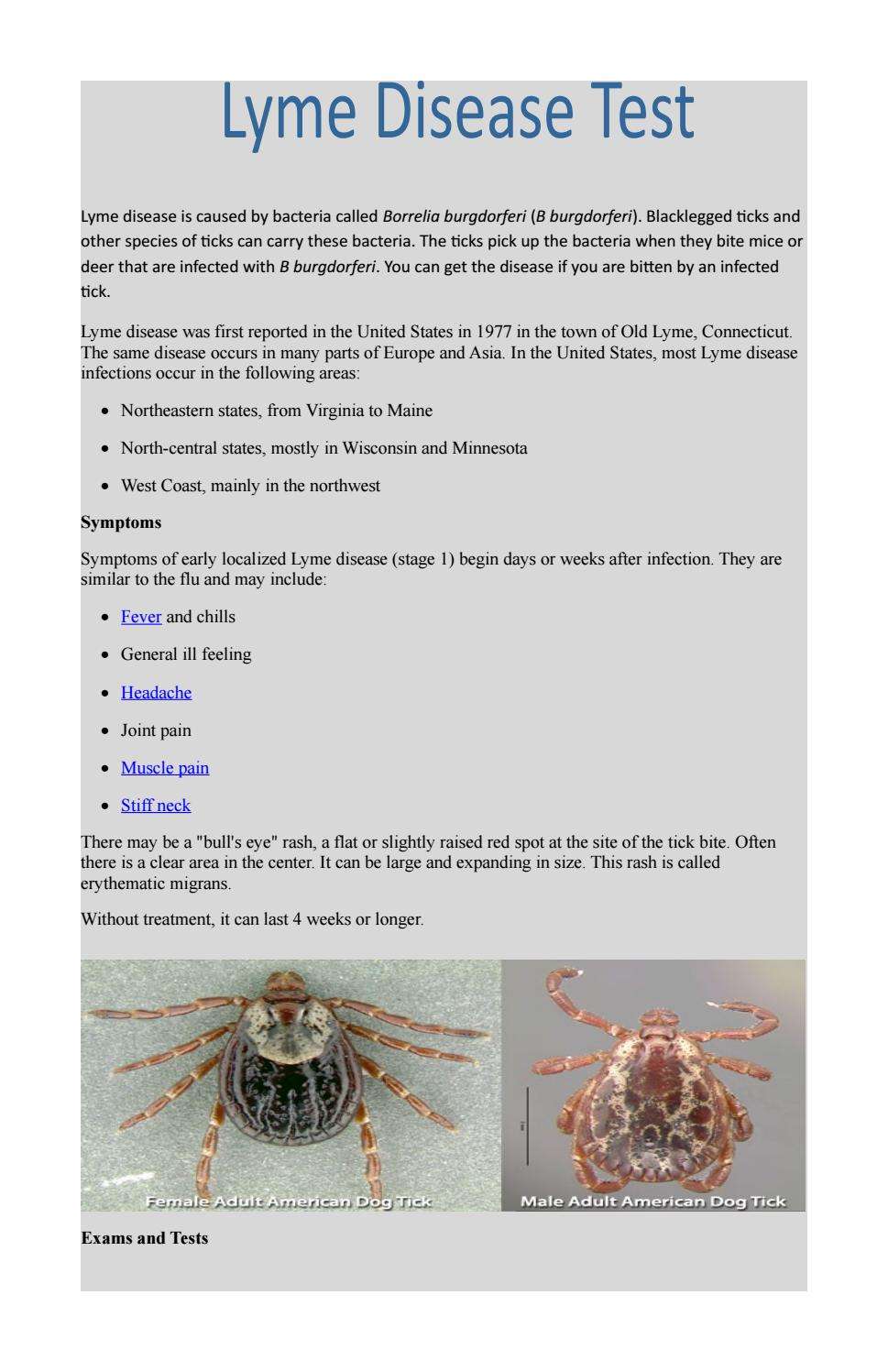Current Problems With Lyme Disease Diagnosis & Patient Care
- Diagnostic tests cannot yet accurately identify the earliest stage of Lyme disease when making the diagnosis is crucial.
- The rash is not always present or easily recognized
- Misdiagnosis and delayed diagnosis can make Lyme disease more difficult to treat and lead to prolonged and debilitating illness
- Early symptoms can be mistaken for a summer flu
- Lyme disease can involve several parts of the body, including joints, connective tissue, heart, brain, and nerves, and produce different symptoms at different times.
- Antibody testing done after early treatment may be negative and never turn positive for some cases
- Borrelia burgdorferi can evade our protective immune system and trigger immune system dysfunction.
- No reliable blood test is presently available to measure treatment success, necessitating close clinical follow up and improved physician education.
- Presently there is no vaccine to prevent Lyme disease available to humans.
Who Should Get Testing
Testing is usually indicated if a person has symptoms of Lyme disease and a known or possible exposure to ticks that can carry the Borrelia bacteria. However, because it takes time for antibodies to develop, the timing of testing is important to consider.
Lyme disease symptoms depend on the extent of the bacterial infection. Three phases are used to describe the infection:
It is important to understand these phases because testing is not equally valuable in each stage. With early localized disease and erythema migrans, blood testing is generally not helpful because antibodies have not had enough time to develop.
Because of similar concerns about potential false positive results, random screening for Lyme disease in people without symptoms is not recommended even in areas that are known to have ticks that can carry the Borrelia bacteria.
Completion Of Lyme Disease Test Request Form
Diagnostic samples must be submitted with a completed RIPLLyme disease test request form . Please use a single request form for each patient even when sending several samples.
Please provide details of the sample type, patients symptoms and onset date, tick bite or exposure history and, if relevant, travel and treatment history. Symptom onset date is particularly important for interpretation of laboratory results.
When sending CSF, please provide the cell count and total albumin, IgG and IgM levels for the CSF and serum pair, if available.
Ideally the clinician who sees the patient should print out and complete the appropriate request form . Send the request to the local laboratory with the clinical sample along with a local laboratory request form, whether this is paper or electronic.
The local laboratory should complete the senders information on the request form and then forward the completed form and sample to RIPL. Before sending samples, clinicians are advised to liaise with their local laboratory because local arrangements may vary.
If only immunoblot confirmation is required because the local laboratory has already obtained a positive Lyme screening test result on the serum sample being submitted, tick the Line blot confirmation only box and write the positive screening test result below.
Read Also: Can Lyme Disease Cause Weight Gain
To Halt The Spread Of Lyme Nantucket Residents Consider Genetically Engineered Mice
Her ordeal is a common one every year, some 300,000 people in the United States are diagnosed with Lyme disease, according to the Centers for Disease Control and Prevention, and that number is on the rise. Some people wait months or years to get a correct Lyme diagnosis. And their cases highlight a problem: Tests for Lyme in the first month of infection are frequently wrong. When diagnosed and treated early the infection is a simple one to get rid of, but left untreated it can cause a myriad of lingering symptoms, from severe arthritis to short-term memory problems.
Now, a number of research groups are working to improve Lyme tests to catch infections in the early stages. One avenue being studied by the CDC aims to create a Lyme signature of small molecules in the blood an approach that, in early testing, catches a dramatically higher share of early infections.
Why Lyme Is Tough To Diagnose

- Lyme symptoms are similar to other illnesses, so misdiagnosis is common.
- Many Canadian doctors are unfamiliar with Lyme, so they dont test for it or administer the wrong tests.
- Only a handful of blood tests effectively detect Lyme bacteria, so the infection is often missed.
Dont get discouraged if you get a negative diagnosis. Seek out second, and even third, opinions if you must!
You May Like: Lyme Disease Blood Test Name
How Do You Find Out If You Have Lyme Disease
Signs and Symptoms of Untreated Lyme Disease
What If Your Lyme Disease Test Is Positive
Its important to note that a positive result doesnt mean you have a diagnosis of Lyme disease. The tests will show that antibodies are present in your blood, but a physician will need to order another type of test before you get an official diagnosis.
If someone gets a positive at-home test, definitely see your doctor, says Dr. Puja Uppal, a board certified family medicine physician and the chief medical officer at Think Healthy.
A physician will likely order both an enzyme-linked immunosorbent assay and a Western blot test, which check for antibodies specific to Borrelia burgdorferi. They will consider the results of both these tests, along with your symptoms, to make an accurate diagnosis.
Read Also: Lyme Disease Specialists In Maryland
Do Dogs Have Lyme Disease Forever
Some time since, or just prior to, the last test, your dog was bitten by a tick that harbored the Lyme bacteria, Borrelia burgdorferi.
According to a study at Cornell University, 94% of dogs that have been exposed will never develop disease symptoms.
This means a positive test is not the end of the world.
Lyme can be treated with antibiotics.
And there are many ways to prevent tick bites.
But there’s no vaccine available if you want extra protection against the disease .
Yet in the late 1990s and early 2000s, a vaccine called LYMErix was sold to prevent between 76 and 92 percent of infections.
You Do Not Usually Need Tests To Show That You Have Lyme Disease
In most cases, theres a clear sign of Lyme diseasea painless, spreading rash that often grows to look like a bulls eye. If you have this rash, and you recently had a tick bite or were in an area known for Lyme disease, you dont need a test. Instead, your doctor can just start treating you with antibiotics, as appropriate.
Also Check: How To Cure Lyme Disease Naturally
Can A Dog Contract Lyme Disease
Yes. Talk to a Veterinarian about giving the Lyme diseasevaccine to your dog as a preventive measure, there are some whobelieve it may be effective and others who do not. It is notnecessary except in certain areas of the US, so speak to a Vetabout its use.Symptoms of Lyme disease in dogs include: # High fever # Swollenlymph nodes # Lameness # Loss of appetite # Inflamed joints #Lethargy Dogs get Lyme disease from very small deer ticks thatcarry the bacteria that causes Lyme Disease. Preventive tickrepellents and systemic medicines that provide protection againstticks should be used for dogs in areas where these ticks carryingthe bacteria are found such as dogs along the Atlantic coast, thosein New England states, in Oregon and California, and someMidwestern states. Treatment for infected dogs is usuallyantibiotics or antimicrobial agents.
Diagnosis Of Lyme Disease
Many cases of Lyme disease are initially misdiagnosed. Lyme disease can be difficult to diagnose because early symptoms of fever, severe fatigue, and achiness are also common in many other illnesses. In addition, diagnostic blood tests are not always dependable, particularly in early disease. However, the round expanding red lesion rash is a unique sign that is more specific for Lyme disease, and many times a diagnosis can be made based on the tell-tale erythema migrans rash itself. Yet, it is important to understand that the erythema migrans rash is not always present or recognizable, and symptoms can fluctuate.
Think the Lyme disease rash is always a bulls-eye? Think again.Think its a spider bite? Think again. Please refer to our poster of varied rash manifestations as a helpful Lyme disease rash identification tool.
Recognizing the Lyme disease erythema migrans rash can be crucial to early diagnosis and treatment.
Despite common belief, the stereotypical ring within a ring bullseye rash is only present in a minority of Lyme disease patients. Instead, the majority of Lyme disease rashes are uniformly red or blue-red and do not have a central clearing or bullseye. Sometimes the site of the tick bite is clearly visible in the center of this lesion. The erythema migrans rash is almost always round or oval and expands over days to a diameter greater than 2. The Lyme rash is often confused with a spider bite, despite spider bites not expanding in this way.
Recommended Reading: How Do You Know If You Get Lyme Disease
Submission And Collection Notes
If European Lyme disease testing is required: enter European Lyme disease under Test Description of the and provide travel history including location of travel and dates.
European Lyme is referred to the National Microbiology Laboratory in Winnipeg.
Indicate the following on the :
- date of onset
Dont Miss: Best Herbal Treatment For Lyme Disease
What To Think About

- It may be hard to tell if you have Lyme disease. False-positive and false-negative Lyme disease test results are common. Many people do not make antibodies to Lyme disease bacteria for up to 8 weeks after being infected.
- Doctors often do not rely on test results alone when recommending treatment for a person who may have Lyme disease. Treatment is often based on a person’s symptoms, the time of year, having a tick bite, and other risk factors for Lyme disease.
Recommended Reading: Is Lyme Disease Curable In Humans
What Happens During Lyme Disease Testing
Lyme disease testing is usually done with your blood or cerebrospinal fluid.
For a Lyme disease blood test:
- A health care professional will take a blood sample from a vein in your arm, using a small needle. After the needle is inserted, a small amount of blood will be collected into a test tube or vial. You may feel a little sting when the needle goes in or out. This usually takes less than five minutes.
If you have symptoms of Lyme disease affecting your nervous system, such as neck stiffness and numbness in hands or feet, you may need a test of cerebrospinal fluid . CSF is a clear liquid found in your brain and spinal cord. During this test, your CSF will be collected through a procedure called a lumbar puncture, also known as a spinal tap. During the procedure:
Why You Might Need To See A Llmd:
- Your Lyme disease test results were negative, but you still have symptoms of Lyme disease.
- Youve been treated for Lyme disease in the past but still have symptoms, which could indicate chronic Lyme disease.
- Youve been treated or are being treated for common misdiagnoses of Lyme disease, such as Rheumatoid Arthritis or Chronic Fatigue Syndrome, but your symptoms havent gone away.
- Your physician doesnt believe in Lyme disease, chronic Lyme disease, or Post-Treatment Lyme Disease Syndrome.
Even patients who dont fall into the above categories may simply feel safer in the hands of a LLMD who is familiar with the various ways Lyme and other tick-borne diseases present themselves.
You May Like: Snow Plowing East Lyme Ct
Recommended Reading: Lyme Disease Prevention In Humans
How Will Pregnancy Affect Treatment For Lyme Disease
Early treatment of Lyme disease during pregnancy is important. Thats because if Lyme disease is left untreated, it can affect the placenta. According to the CDC , transmission of Lyme disease from mother to fetus is possible, though rare.
For pregnant people, treatment includes a round of antibiotics. Certain treatments for Lyme disease may not be used, as they can affect the fetus. If you suspect that you have Lyme disease, talk with a healthcare professional immediately.
Recommended Reading: Best Infrared Sauna For Lyme Disease
Management Of Individuals Without Symptoms Following A Tick Bite
Diagnostic testing is not recommended for individuals who do not develop any symptoms suggestive of Lyme disease after a tick bite.
Some commercial companies offer services to test removed ticks for the presence of the bacteria that cause Lyme disease. PHE does not provide such tick-testing services. The results of such tests should not be used to inform diagnosis or treatment. A positive result does not mean that the infected tick will have passed on the bacteria there are many factors that determine whether Lyme disease results from the bite of an infected tick. A negative result may not be technically valid and could give false assurance, as it does not exclude the possibility that another tick elsewhere on the body has been missed by the patient.
PHE runs a tick surveillance scheme and is happy to receive ticks for species identification and to monitor tick distribution.
You May Like: Unusual Symptoms Of Lyme Disease
How Is Lyme Disease Diagnosed
Though several types of tests do exist for the diagnosis of Lyme disease, the best tests for a Lyme disease diagnosis are blood tests, also known as serological tests. These tests are indirect, meaning they dont detect the infecting bacteria or its antigens but rather the antibodies an infected persons body produces in response to these antigens.
When Should I Get Checked For Lyme Disease
Generally, it is best to get tested for Lyme disease if you live where ticks are common or have recently visited such areas. Most certainly, you should get tested if you suspect that a tick has bitten you. It is important to talk to your doctor if you think you have any of the following early Lyme disease symptoms:
- A rash resembling a bulls eye on the spot where youve been bitten
- Fatigue
- Headaches
- Fever
Other symptoms dont show up immediately. Sometimes, it takes up to a few weeks or months after the tick bite to notice the following:
- Swelling on the joints or severe joint pain
- Tingling in the feet and hands
- Dizziness
- Shortness of breath
While it is okay get checked early, Lyme disease test results numbers are more authentic a few weeks after youve been bitten by a carrier-tick. Your body would have developed antibodies within that period, and that can make it easier to detect the disease.
Recommended Reading: Is Diarrhea A Symptom Of Lyme Disease
Is It Possible For Lyme Disease To Be Misdiagnosed As Amyotrophic Lateral Sclerosis Are There Similarities In Symptoms Between These Two Diseases
The question of a relationship between Lyme Disease and ALS first received significant academic attention when Dr. John Halperin who was then a neurologist at Stony Brook conducted a study in which he compared the frequency of blood test positivity to the agent of Lyme disease among patients with ALS to community controls. The results indicated a higher percentage of the ALS patients were seropositive for Lyme Disease. Since then, there have been isolated case reports both in the media and one or two in the academic literature indicating that a patient had been misdiagnosed with an ALS-like illness only later to be re-diagnosed and treated for Lyme disease with good clinical response. Although we suspect that there may be rare individuals who have symptoms similar to ALS but actually have proximal motor neuropathy caused by Lyme disease, the vast majority of patients with ALS are not thought to have Lyme disease as the cause of their serious disease. Clinical trials have been underway using antibiotics for ALS not because there is belief that ALS is caused by a microbe but because these antimicrobial agents have other properties as well, such as decreasing inflammation or decreasing glutamatergic excitotoxicity. The studies examining intravenous ceftriaxone as a treatment for ALS were not successful.
Do All Ticks Carry Lyme Disease

Most people who get tick bites do not get Lyme disease. Not all ticks are infected, and the risk for contracting the disease increases the longer the tick is attached to the body. Within one to four weeks of being bitten by an infected tick, most people will experience some symptoms of Lyme disease.
Read Also: What Do I Do If My Dog Has Lyme Disease
Lyme Disease Is Remarkably Difficult To Diagnose
The problem with Lyme disease is that the bacteria can create a hard shell around themselves when inactive so that the blood tests are unable to detect them. This is especially true when the disease has reached the chronic stage. The timing of the symptoms is often used by a medical provider to establish a time line to a tick bite or exposure to a high-risk region where the disease is commonly transmitted.
Because the ticks that can spread Lyme disease are often the size of a pinhead, the ticks might not even be notice. A bulls-eye rash at the bite location is a trademark symptom of Lyme disease, but only about half of the people who are infected with the bacteria develop the rash. Once the disease reaches the chronic stage, chronic arthritis, joint pain, and neurological symptoms begin to appear, sometimes several months after the infection.